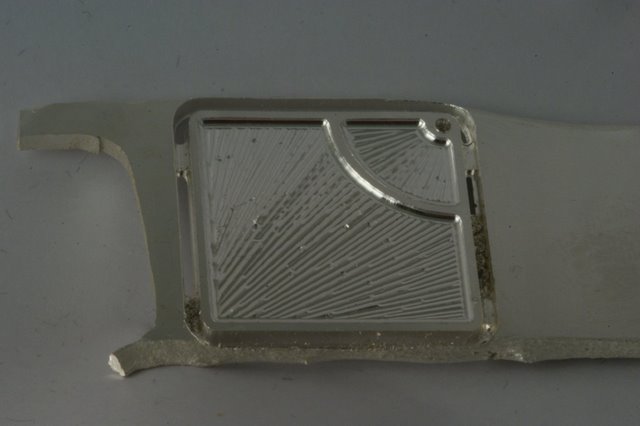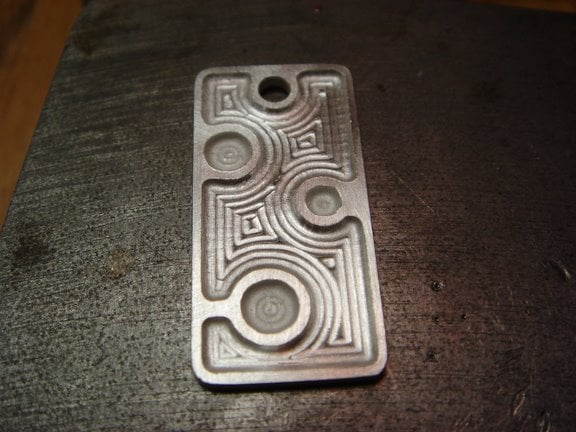All,
I’m getting ready to carve my first silver piece ever of out an
ingot (all I’ve dome so far was cast from dirty scrap sterling), and
I’m scared shitless.
In the next few weeks I hope to CNC mill out some 2D connected
letters from a 1 ounce fine silver (0.999) rectangular ingot, about 1
inch wide by 2 inches long by 3/16" thick. It will probably be less
a little less thick after I use a 1/4 inch wide carbide endmill to
surface off the ingot’s decorations on both sides. Then I’ll likely
use a 0.05 inch wide carbide endmill (I have experience with those
when I carved with bismuth last year) to cut my pattern out.
These ingots are readily available from my local coin store in
Arizona and I won’t have to pay extra for fabbing into sheet or
wire. I’ll save the chips for my own castings.
One of the main reasons I chose 0.999 silver is that hopefully I
won’t need to deal with firescale (which seems to be a problem with
copper oxidation), which should hopefully simply how I make my first
few exercises. Using 0.999 will limit me to pendants and
paperweights but I have to start somewhere because I have no master
looking over my shoulder to tell me what I am doing wrong with
sterling.
I have a few questions about ingot silver:
-
The ingot seems to be really hard and does not scratch easily.
Does that mean that it has already been work hardened in the process
of its manufacture, and so my surfacing pass should temper the
metal? Or do I need to perform manual tempering (hammering) after
carving out my letters? -
I’m not exactly having a firm grasp regarding improving the
metal’s appearance after my surfacing pass. I have brown compound
(tripoli?) and yellow compound (polish?) that Thunderbird Jewelry
Supply recommended apply to my carved silver to make it look nice,
using a Dremel Ibuff wheel. Alternatively, I have Dremel grinding
stones, but I am not sure which order to use them? Can someone give
me some pointers about the right way to polish silver using the
tools I have on hand?
Thanks,
Andrew Jonathan Fine
P.S. Just please don’t tell me I don’t have any business trying… I
can’t afford to go to school for professional credentials…

